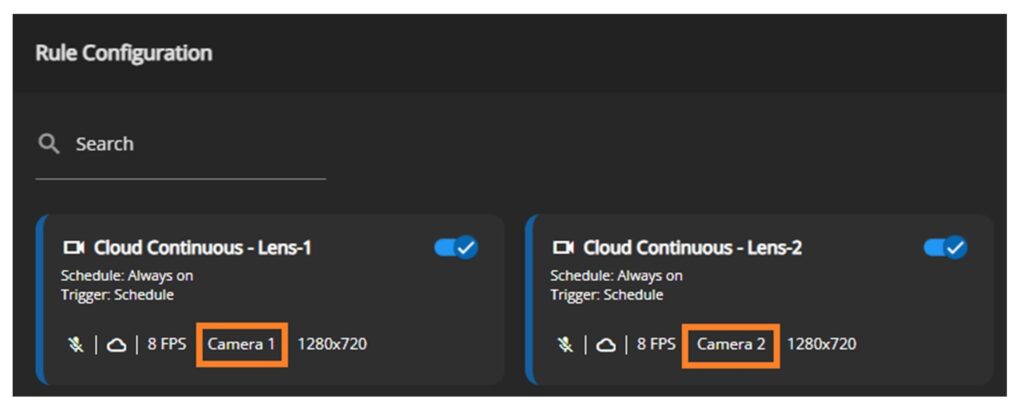Multisensor Device Best Practices
Multisensor devices are security cameras equipped with multiple sensors in a single housing, offering extensive coverage while reducing the number of devices needed for deployment. Although similar to single-sensor devices, multisensor devices have some distinct configuration requirements.
Analytics
When utilizing an edge-based analytic for recording or notifications, the device scenario or profile must be configured. For multisensor devices this means that each sensor must have a unique scenario or profile setup. This can be completed by accessing the device interface and navigating to the analytics (Configuring Analytics Videos). This process is vitally important as some multisensor devices support AXIS Object Analytics (AOA) on both sensors, however the analytic only comes turned on for one sensor.
Additionally, please note that some devices do not support AOA or only support it for a single sensor.
Recording Rules
When creating a recording rule based on an edge-based AI analytic for devices with multiple sensors, YourSix recommends creating a separate rule for each sensor. This means, for example, having one rule for sensor one and another for sensor two. While the platform does permit multiple sensors to be included in a single rule, this configuration results in all sensors within that rule recording whenever any one of them detects an event (based on the analytic). By separating the rules, each sensor will function independently when recording. Example:

Licensing
Please refer to our subscription page for the cloud storage subscription needed for a multisensor device.
Object Appearance Search
Object Appearance Search does not support multisensor, panoramic, or fisheye devices at this time. (Object Appearance Search)
Specific Device Recommendations & Notes
- P37: Each sensor functions independently, so they cannot identify if they are triggering alerts for the same person across different sensors. As a result, if AOA is enabled on all four sensors and two sensors detect the same person, two separate alerts will be generated.
